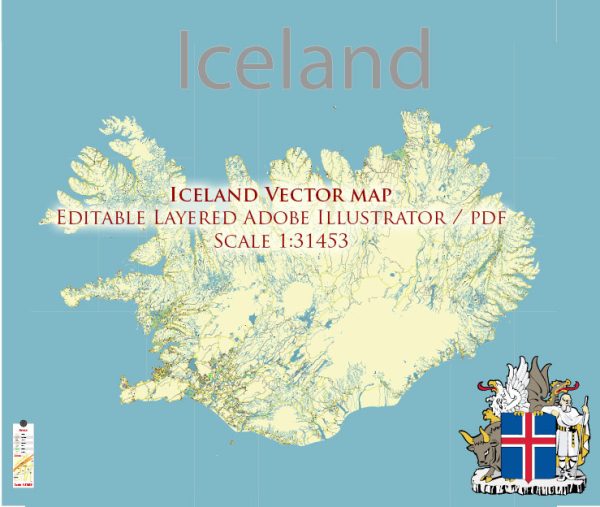Iceland’s history of urban development is characterized by a unique set of circumstances and challenges due to its geographical location, climate, and relatively small population. Here’s a brief overview of Iceland’s urban development history:
- Early Settlement Period (9th-10th centuries): The settlement of Iceland began in the late 9th century when Norse settlers, primarily from Norway, began arriving. These early settlers established small, scattered farms rather than concentrated urban centers.
- Medieval Period (11th-14th centuries): Iceland continued to be primarily rural during the medieval period, with a decentralized social structure. The Alþingi (Althing), one of the world’s oldest parliaments, was established in 930 AD at Þingvellir. However, this was more of a gathering place than a traditional urban center.
- Trade and Fishing (15th-18th centuries): The 15th century saw the decline of the Alþingi, and Iceland came under the control of Norway and later Denmark. During this time, trade and fishing became essential to the Icelandic economy, but there was still no significant urbanization.
- 19th Century: The 19th century marked a period of economic hardship for Iceland, with a series of natural disasters and a decline in the fishing industry. However, there were some developments in Reykjavík, the capital city, which was officially designated as such in 1786. The population gradually increased, and Reykjavík became the political and administrative center.
- 20th Century: The 20th century brought significant changes to Iceland’s urban landscape. The economy diversified, and industrialization began. Reykjavík continued to grow, and other urban centers, such as Akureyri in the north, also saw development. The post-World War II era brought increased urbanization, with improved infrastructure, housing, and transportation.
- Late 20th Century to Present: In the latter half of the 20th century, urbanization intensified, and Reykjavík became a cosmopolitan city. The development of the information technology and financial sectors further contributed to the urban growth. Today, Reykjavík is the cultural, economic, and political heart of Iceland, with a modern urban infrastructure.
Despite the urbanization trends, Iceland still maintains a strong connection to its rural roots. The country’s unique natural environment, including geysers, hot springs, and glaciers, continues to be a significant influence on its urban development policies, emphasizing sustainability and environmental consciousness.


 Author: Kirill Shrayber, Ph.D.
Author: Kirill Shrayber, Ph.D.